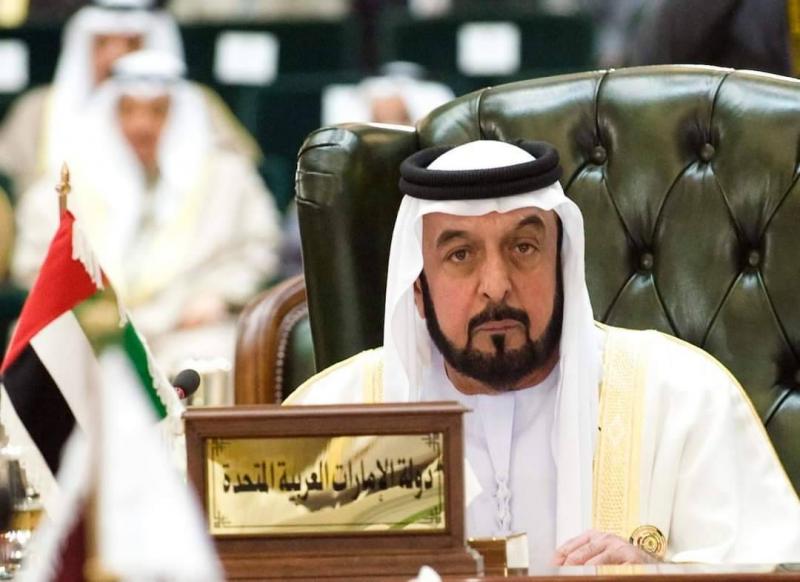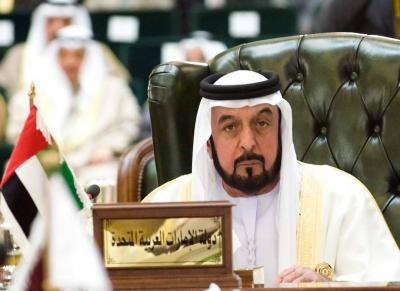On Friday, the UAE announced the death of the President of the State, Sheikh Khalifa bin Zayed. The Ministry of Presidential Affairs stated on its Twitter account: "We mourn to the people of the UAE, the Arab and Islamic nations, and the entire world the leader of the nation and its guiding force, Sheikh Khalifa bin Zayed Al Nahyan, President of the State, who passed away content and pleasing to God on May 13." The ministry also announced a period of official mourning and flag lowering for 40 days, starting from today. It stated that work would be suspended in ministries, departments, federal and local institutions, and the private sector for three days beginning today.
Under his presidency, the UAE witnessed significant economic advancement alongside positive engagement in many regional issues. Sheikh Khalifa lived with his family in the Al Muwaiji Fort in Al Ain City, where he received his education at the Al Nahyan School, established by Sheikh Zayed. He spent most of his childhood in the Al Ain and Buraimi oases with his father, who governed the Al Ain region at that time. When Sheikh Zayed Al Nahyan moved to Abu Dhabi to become the ruler of the emirate in August 1966, he appointed his son Sheikh Khalifa—who was 18 at the time—as his representative in the Eastern Region and president of the courts there. This delegation was considered a sign of the founder's trust.
Sheikh Khalifa followed in his father’s footsteps and continued to implement major development projects in the Eastern Region, particularly those aimed at improving agriculture. His notable success in Al Ain marked the beginning of a long career in serving the people and smoothly taking on his leadership role, as evidenced by his significant achievements. Over the following years, Sheikh Khalifa held several key positions and became the chief executive officer of his father Sheikh Zayed bin Sultan’s government, overseeing the implementation of all major projects.
On February 1, 1969, Sheikh Khalifa was nominated as Crown Prince of Abu Dhabi, and the following day he assumed responsibilities in the defense department of the emirate. He established the defense department in Abu Dhabi, which later became the nucleus of the armed forces of the UAE. On July 1, 1971, as part of a restructuring of the Abu Dhabi government, he was appointed Ruler of Abu Dhabi and Local Minister of Defense and Finance in the emirate. On December 23, 1973, Sheikh Khalifa assumed the position of Deputy Prime Minister in the second cabinet.
Shortly thereafter, on January 20, 1974, he took on the presidency of the Executive Council of Abu Dhabi, which replaced the local government in the emirate. Sheikh Khalifa oversaw the Executive Council in achieving comprehensive development programs in Abu Dhabi, including housing construction, water supply systems, roads, and public infrastructure that enhanced the modernity of Abu Dhabi City. The Abu Dhabi Investment Authority was established in 1976 under the orders of Sheikh Khalifa bin Zayed, aimed at managing financial investments in the emirate to ensure a stable source of income for future generations. Sheikh Khalifa bin Zayed Al Nahyan was elected President of the UAE on November 3, 2004, following the death of Sheikh Zayed bin Sultan Al Nahyan on November 2, 2004.




